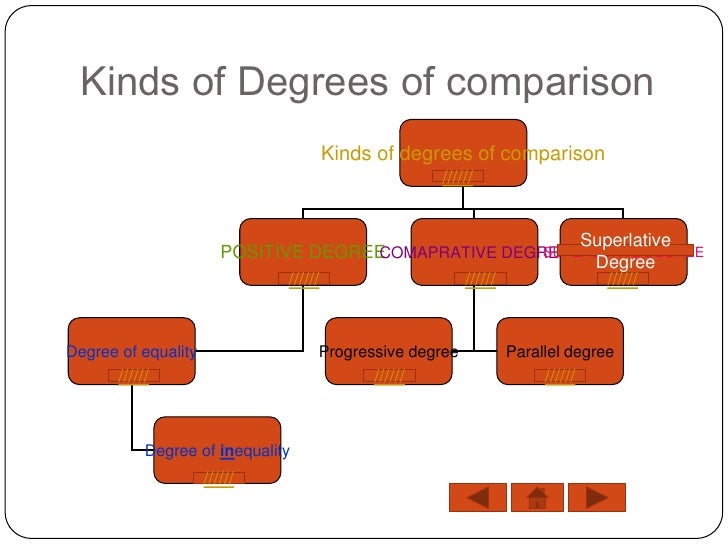sweetymanisha
Wednesday, 31 January 2018
Thursday, 25 January 2018
Active and Passive voice
ACTIVE / PASSIVE VOICE
Active voiceIn most English sentences with an action verb, the subject performs the action denoted by the verb.
These examples show that the subject is doing the verb's action.
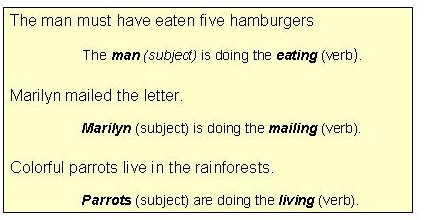
Because the subject does or "acts upon" the verb in such sentences, the sentences are said to be in the active voice.
Passive voice
One can change the normal word order of many active sentences (those with a direct object) so that the subject is no longer active, but is, instead, being acted upon by the verb - or passive.
Note in these examples how the subject-verb relationship has changed.
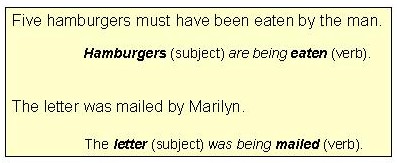
Because the subject is being "acted upon" (or is passive), such sentences are said to be in the passive voice.
NOTE: Colorful parrots live in the rainforests cannot be changed to passive voice because the sentence does not have a direct object.
To change a sentence from active to passive voice, do the following:
1. Move the active sentence's direct object into the sentence's subject slot

2. Place the active sentence's subject into a phrase beginning with the preposition by

3. Add a form of the auxiliary verb be to the main verb and change the main verb's form

Because passive voice sentences necessarily add words and change the normal doer-action-receiver of action direction, they may make the reader work harder to understand the intended meaning.
As the examples below illustrate, a sentence in active voice flows more smoothly and is easier to understand than the same sentence in passive voice.
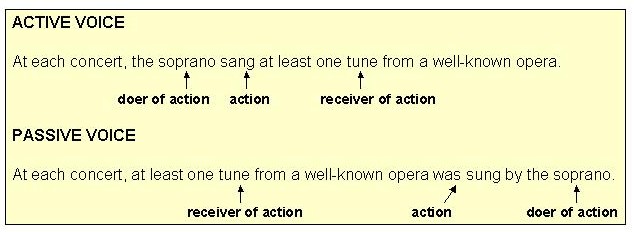
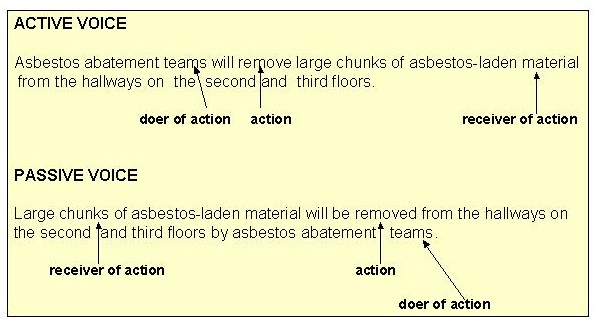
It is generally preferable to use the ACTIVE voice.
To change a passive voice sentence into an active voice sentence, simply reverse the steps shown above.
1. Move the passive sentence's subject into the active sentence's direct object slot

2. Remove the auxiliary verb be from the main verb and change main verb's form if needed

3. Place the passive sentence's object of the preposition by into the subject slot.

Because it is more direct, most writers prefer to use the active voice whenever possible.
The passive voice may be a better choice, however, when
- the doer of the action is unknown, unwanted, or unneeded in the sentence

- the writer wishes to emphasize the action of the sentence rather than the doer of the action

- the writer wishes to use passive voice for sentence variety.
Communicable Disease -Heart Attack
Communicable Disease- Heart Attack
What is a heart attack?
Heart attack facts
- A heart attack results when a blood clot completely obstructs a coronary artery supplying blood to the heart muscle and heart muscle dies.
- The blood clot that causes the heart attack usually forms at the site of rupture of an atherosclerotic, cholesterol plaque on the inner wall of a coronary artery.
- The most common symptom of heart attack is chest pain.
- The most common complications of a heart attack are heart failure and ventricular fibrillation.
- The risk factors for atherosclerosis and heart attack include elevated cholesterol levels, increased blood pressure, tobacco use, diabetes, male gender, and a family history of heart attacks at an early age.
- Heart attacks are diagnosed with electrocardiograms and measurement of cardiac enzymes in blood.
- Treatment guidelines emphasize treatment at a hospital capable of doing PCI (percutaneous coronary intervention) also termed as stenting or stent placement.
- Early reopening of blocked coronary arteries reduces the amount of damage to the heart and improves the prognosis for a heart attack.
- Medical treatment for heart attacks may include antiplatelet, anticoagulant, and clot dissolving drugs as well as angiotensin converting enzyme (ACE) inhibitors, beta blockers, and oxygen.
- Interventional treatment for heart attacks may include coronary angiography with percutaneous transluminal coronary angioplasty (PTCA), coronary artery stents, and coronary artery bypass grafting (CABG).
- Patients suffering a heart attack are hospitalized for several days to detect heart rhythm disturbances, shortness of breath, and chest pain.
- Further heart attacks can be prevented by aspirin, beta blockers, ACE inhibitors, discontinuing smoking, weight reduction, exercise, good control of blood pressure and diabetes, following a low cholesterol and low saturated fat diet that is high in omega-3-fatty acids, taking multivitamins with an increased amount of folic acid, decreasing LDL cholesterol, and increasing HDL cholesterol.
Subscribe to:
Comments (Atom)










